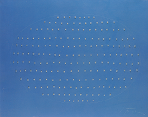Abstract
The paper presents the problems of writing a history of Byzantine literature in the context of postmodern anxieties about canonization, authority and narrative histories of literature. An essential difficulty for such a project is the fact that Byzantine literature has been viewed as a continuation of or appendix to Ancient Greek literature, while, on the other, it has been divided into 'learned' and 'vernacular,' the latter category having been defined as Modern Greek since the middle of the nineteenth century. The paper offers two sets of criteria for establishing new concepts of periodization and taxonomy. A series of examples are indicatively adduced in order to explain the scientific and ideological impasse in which Byzantine Studies have found themselves at the end of the previous century, while delineating a proposal for a different approach to content and structure of a wider synthesis. Writing a 'new' history of Byzantine literature is an experiment in proposing a radical paradigm shift by means of which this particular literary production in Medieval Greek can be studied within the broader context of Medieval European literatures as an integrated entity rather than as a separate and peripheral phase in the histories of Ancient or Modern Greek literature.Except where otherwise noted, the content of this site is licensed under a Creative Commons Attribution-ShareAlike 4.0 International (CC BY-SA 4.0).
Authors retain copyright of their work. The CC BY-SA 4.0 licence allows readers to copy and redistribute the material in any medium or format, and to remix, transform, and build upon the material for any purpose, even commercially, as long as the original author is credited and as long as any works that are derived from the original are distributed under the same terms.
Metrics
Metrics Loading ...

